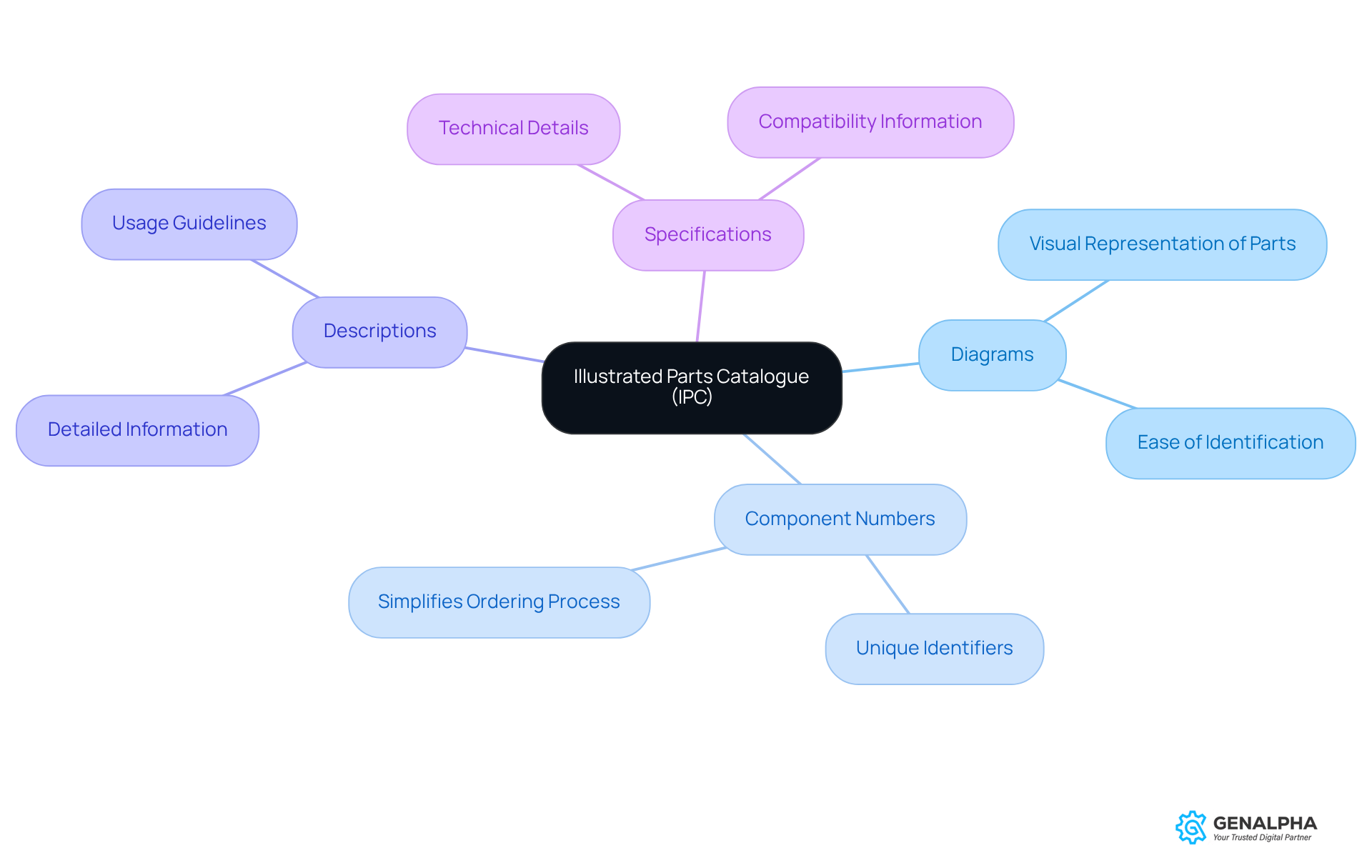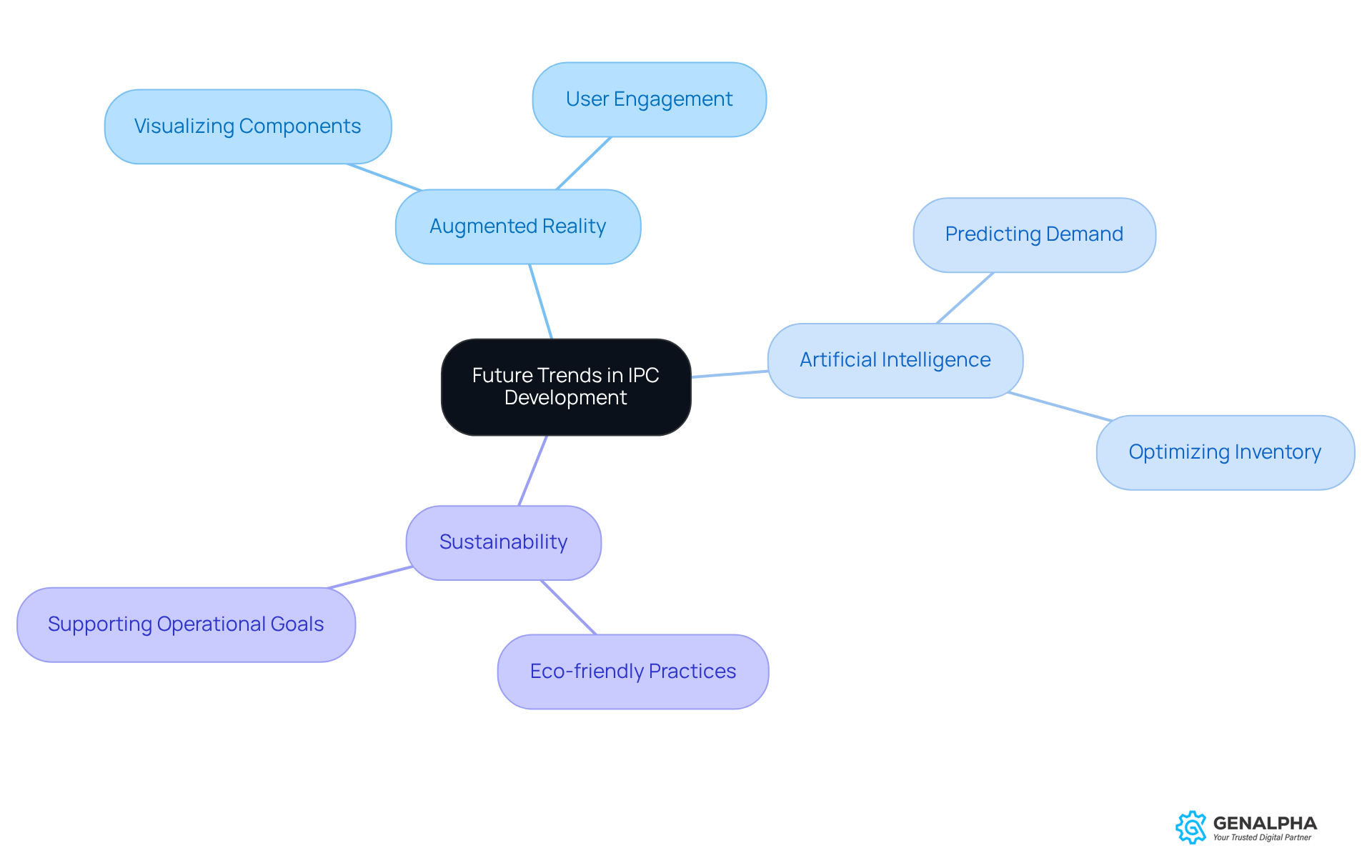Overview
Have you ever found yourself scrambling to identify the right replacement part for your machinery? That’s where the illustrated parts catalogue (IPC) comes in! It’s not just a resource; it’s your go-to guide filled with detailed illustrations and descriptions of machinery components. This makes identifying and procuring those elusive replacement parts a breeze.
But why is the IPC so important? Well, it enhances operational efficiency and boosts customer satisfaction. Imagine interactive diagrams that make understanding components easier, or integrated inventory management that keeps everything organized. And let’s not forget the exciting future possibilities—think augmented reality and artificial intelligence! These advancements could take the IPC to a whole new level.
So, next time you’re faced with a machinery issue, remember the IPC. It’s designed to help you navigate the complexities of parts identification and procurement. Ready to dive into the world of IPCs? Let’s explore how they can transform your operational processes together!
Introduction
Understanding the ins and outs of machinery maintenance can sometimes feel like a puzzle, right? Well, that’s where the Illustrated Parts Catalogue (IPC) comes into play! This handy tool not only makes it easier to identify and get your hands on replacement parts but also boosts efficiency in the manufacturing world.
But here’s a thought: as technology keeps evolving, how do we keep up with all the new features and functionalities of IPCs to make the most of them? Exploring this question opens up a treasure trove of insights into the future of parts catalogues and their essential role in today’s industry. So, let’s dive in together!
Define the Illustrated Parts Catalogue (IPC)
Have you ever found yourself in need of a replacement part for your machinery? The is designed to assist you! This handy document is packed with detailed illustrations and descriptions of components used in various equipment. The illustrated parts catalogue definition is an essential resource for producers, suppliers, and clients alike, making it easier to recognize and procure those all-important replacement components.
Industrial Product Catalogs typically feature:
- Diagrams
- Component numbers
- Descriptions
- Specifications
This means you can quickly find exactly what you need for maintenance and repair. By simplifying the identification process, industrial production companies not only boost customer satisfaction but also enhance operational effectiveness in the manufacturing industry.
So, next time you're searching for a part, remember the IPC! It’s designed to make your life easier and keep your operations running smoothly. Why not take a look and see how it can benefit you?

Trace the Evolution of IPCs
Have you ever thought about how far we've come with the definition of illustrated parts catalogues? It all started back in the early manufacturing days when parts were identified through printed manuals. Fast forward to today, and we’ve seen a huge shift! As technology advanced, those static paper documents evolved into dynamic digital formats. With the introduction of computer-aided design (CAD), we now have more precise illustrations that can be updated easily.
In recent years, the rise of eCommerce and digital platforms has taken IPCs to the next level. Manufacturers can now seamlessly integrate these catalogues with online sales systems, making them more accessible and . This evolution is a clear reflection of the industry's move towards digital solutions, which is explained in the illustrated parts catalogue definition, that prioritize customer engagement and operational efficiency.
Isn't it exciting to see how these changes can improve our interactions with parts catalogues? It makes you wonder what the future holds for us in this digital age!

Examine Current IPC Features and Functionalities
Have you ever struggled to find the right part in a catalog? Modern is here to change that! They come packed with features that make your life easier and more efficient. For instance, interactive diagrams let you zoom in on specific parts, while handy search capabilities help you quickly find part numbers and descriptions. Plus, many of these catalogues now integrate seamlessly with inventory management systems, which reflects the illustrated parts catalogue definition.
But wait, there’s more! Imagine being able to manage your warranties right from the catalogue. That’s right! Many IPCs now offer digital warranty management, allowing you to keep tabs on warranty status and claims without any hassle. These advancements not only make your experience smoother but also help manufacturers and distributors manage inventory and fulfill orders more effectively.
So, why not give these modern catalogues a try? You might just find that they transform the way you handle parts and inventory!

Explore Future Trends in IPC Development
Looking ahead, it’s exciting to think about how the will continue to evolve. Have you ever imagined using augmented reality (AR) to visualize components right in your own space? This technology could really change the game, making it easier for users to engage with integrated systems. Additionally, advancements in artificial intelligence (AI) could help manufacturers predict component demand and optimize inventory levels. This means less waste and more efficiency!
As we shift toward sustainability, Integrated Product Companies might start including information on eco-friendly components and practices. Isn’t it great to think that the illustrated parts catalogue definition could not only help us identify parts but also support broader operational and environmental goals? These trends suggest a future where IPCs are essential tools for both our daily needs and our planet’s health. What are your thoughts on this shift?

Conclusion
The illustrated parts catalogue (IPC) is an invaluable tool in the machinery and manufacturing sectors, making it easier than ever to identify and procure replacement parts. With detailed illustrations and specifications, IPCs boost the efficiency of maintenance and repair processes, leading to happier customers and better operational effectiveness.
Have you noticed how IPCs have evolved? They’ve come a long way from static printed manuals to dynamic digital formats. Today, they integrate seamlessly with modern technologies like CAD and eCommerce platforms. Current features, such as interactive diagrams and digital warranty management, really show how these catalogues simplify the user experience. And looking ahead, trends like augmented reality and artificial intelligence promise to take IPCs to the next level, making them even more crucial for operational efficiency and sustainability.
As industries continue to change, we can't overlook the importance of illustrated parts catalogues. Embracing these advancements will not only improve daily operations but also support our broader goals of efficiency and environmental responsibility. Engaging with the latest IPC technologies is a proactive step we can all take toward optimizing machinery management and ensuring a sustainable future in manufacturing. So, are you ready to dive into the world of IPCs and see how they can transform your operations?
Frequently Asked Questions
What is an Illustrated Parts Catalogue (IPC)?
An Illustrated Parts Catalogue (IPC) is a document that contains detailed illustrations and descriptions of components used in various machinery, designed to assist in identifying and procuring replacement parts.
Who can benefit from using an IPC?
Producers, suppliers, and clients can all benefit from using an IPC as it simplifies the process of recognizing and obtaining replacement components.
What types of information are typically included in an IPC?
An IPC typically includes diagrams, component numbers, descriptions, and specifications of the parts.
How does an IPC improve operational effectiveness in the manufacturing industry?
By simplifying the identification process of replacement parts, an IPC boosts customer satisfaction and enhances operational effectiveness in the manufacturing industry.
Why should someone use an IPC when searching for machinery parts?
Using an IPC makes it easier to find the exact parts needed for maintenance and repair, ensuring smoother operations and quicker procurement.




